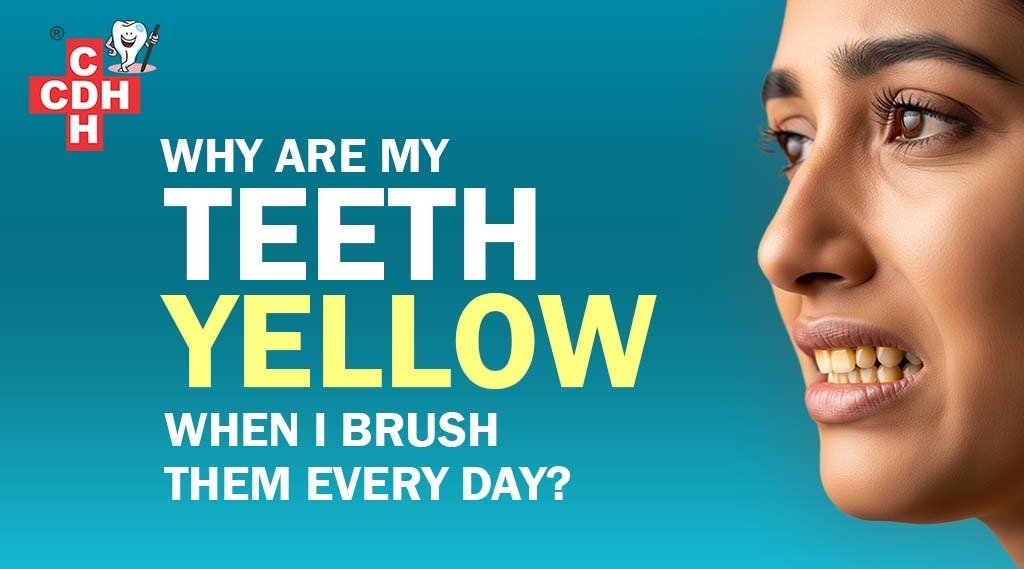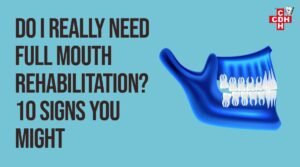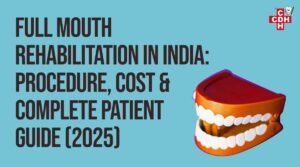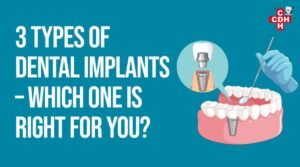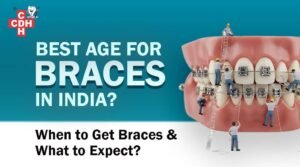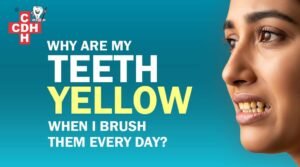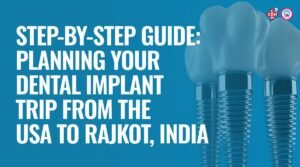You brush your teeth twice a day, never skip flossing, and still catch yourself wondering: “Why are my teeth yellow?” It’s frustrating—and common.
The truth is, brushing alone doesn’t guarantee a bright, white smile. In fact, there are several underlying factors that contribute to yellowing teeth, even in people with excellent oral hygiene habits.
At City Dental Hospital in Rajkot, we meet patients daily who are confused and concerned about persistent tooth discoloration. This guide explains 12 surprising causes of yellow teeth even after daily brushing—and more importantly, what you can do about it.
Whether you’re dealing with enamel erosion, stubborn stains, or just natural dentin showing through, we’ll help you understand the science—and share effective solutions that go beyond your toothbrush.
Natural Tooth Color vs. Whitening Expectations
Not all yellow teeth are unhealthy. Genetics determines your natural tooth shade, which can range from bright white to pale yellow. The dentin beneath the enamel often shows through, giving a slightly yellow appearance. Media and photo filters create unrealistic whitening standards. It’s normal to have some variation in color.
12 Major Causes for Yellow Teeth
1. Brushing Technique May Be Incorrect
Brushing twice a day is important, but how you brush matters even more. Using too much force or brushing too quickly can miss plaque buildup and even wear down enamel. Short, gentle, circular motions with the right toothbrush are far more effective. Many people don’t brush for the recommended 2 minutes.
2. Plaque Build-Up That Brushing Misses
Even with daily brushing, plaque can linger in hard-to-reach areas, especially between teeth or along the gumline. Over time, this plaque hardens into tartar, which traps stains and discolors teeth. Tartar cannot be removed with brushing your teeth alone. Professional cleaning is essential to eliminate it fully.
3. Staining Foods and Drinks
Frequent consumption of tea, coffee, red wine, and turmeric-rich Indian dishes can gradually stain your enamel. These foods and drinks contain chromogens and tannins, which cling to the tooth surface and dull their brightness. Even if you brush after meals, some stains may still build up over time. Rinsing your mouth and using a straw for beverages can reduce exposure. For stubborn stains, City Dental Hospital offers professional whitening treatments that restore your natural shine.
4. Smoking and Tobacco Use
Nicotine and tar from cigarettes leave persistent brownish-yellow stains on teeth. In India, the use of gutkha, paan masala, and other smokeless tobacco products further accelerates discoloration and damages enamel. These stains are often too deep for regular brushing to remove. Over time, they can also lead to gum disease and bad breath.
5. Enamel Erosion Revealing Dentin
Frequent consumption of acidic foods or aggressive brushing techniques can gradually wear away your enamel, the white outer layer of your teeth. As enamel thins, the naturally yellow dentin underneath becomes more visible, giving your teeth a dull or yellow appearance. No amount of brushing can restore lost enamel.
6. Fluorosis or Mineral Imbalance in Water
In many regions, especially those with high natural fluoride content in groundwater, people are prone to dental fluorosis. This condition results in white-yellow or brown patches on teeth, often developing during childhood. The role of fluoride here is significant—while small amounts help prevent cavities, excessive exposure during tooth development can lead to staining. Excess minerals in hard water can also cause surface discoloration. These stains are intrinsic and not removable by regular brushing.
Also Read: Fluoride – Myths and Facts
7. Medications or Medical Conditions
Some medications, especially antibiotics like tetracycline taken during childhood, can cause intrinsic tooth discoloration. Other drugs, such as certain antihistamines, blood pressure medications, or chemotherapy agents, may also lead to staining over time. These effects are often internal, meaning they affect the tooth from within. Even with regular brushing, such discoloration may persist. Professional dental treatments are usually required to manage this kind of staining.
8. Aging and Its Effects
As we age, the outer enamel layer naturally wears down, revealing more of the yellowish dentin underneath. This is a gradual, internal change that occurs even with good oral hygiene. The result is teeth that appear more yellow over time. Brushing alone cannot reverse this effect, since the discoloration comes from within. City Dental Hospital offers age-appropriate cosmetic treatments like Teeth whitening or veneers to restore youthful brightness.
9. Lack of Professional Cleaning
Brushing at home helps, but it doesn’t replace professional dental care. Over time, plaque and tartar can accumulate in areas your toothbrush can’t reach, especially below the gum line. This build-up not only leads to discoloration but also creates an environment for bacteria to thrive. Without regular scaling and polishing, your teeth may appear yellow despite daily brushing. Professional cleanings are essential for maintaining true dental brightness.
11. Grinding (Bruxism) That Wears Enamel
Habitual teeth grinding, whether during sleep or stress, gradually wears down the protective enamel layer. As enamel thins, the underlying yellow dentin becomes more visible, giving the teeth a dull or stained look. Brushing won’t solve this because the discoloration is structural. Bruxism often goes unnoticed until visible damage appears. A dental evaluation and custom night guard can help protect your teeth and preserve your enamel.
Also Read: Bruxism in Children Causes and Prevention
12. Dental Materials from Past Fillings or Crowns
Certain older dental restorations, like silver amalgam fillings or metal-backed crowns, can leach color into surrounding tooth structures over time. These materials may cause a greyish or yellowish tint that brushing cannot remove. Resin fillings may also stain with age. The discoloration is internal, not surface-level. Modern cosmetic dentistry offers replacement options that match your natural tooth shade more effectively.
What Can You Do About Yellow Teeth?
Daily Fixes:
- Use an electric toothbrush with ADA-approved whitening toothpaste for more effective plaque removal.
- Avoid or limit staining items like coffee, tea, and spicy curries, and rinse your mouth after consuming them.
- Drink water throughout the day to keep your mouth clean and reduce stain buildup.
- Don’t brush immediately after eating acidic foods (like citrus or soda); wait 30 minutes to protect enamel.
- Floss daily; leftover particles between teeth can lead to hidden stains.
Professional Solutions at City Dental Hospital, Rajkot
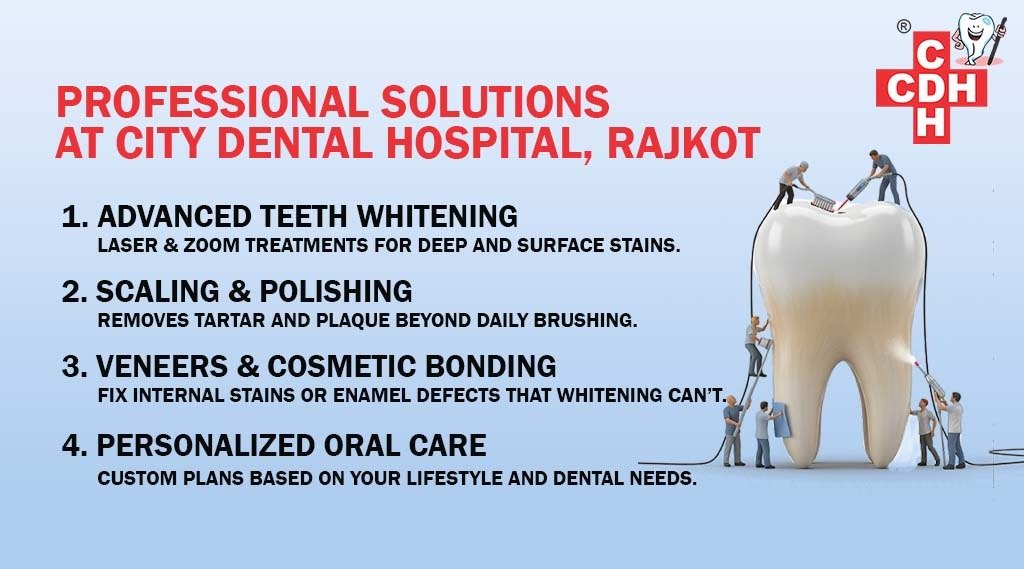
Advanced Teeth Whitening (Laser, Zoom)
Effectively removes both surface-level (extrinsic) and deeper (intrinsic) stains for a visibly brighter smile.
Scaling & Polishing
Thorough removal of tartar and plaque buildup that regular brushing can’t eliminate, essential for long-term oral health.
Veneers or Cosmetic Bonding
Ideal for teeth with internal discoloration or enamel defects that don’t respond to whitening treatments.
Personalized Oral Care Plans
Tailored recommendations based on your enamel condition, lifestyle, age, and the exact cause of tooth discoloration.
Conclusion: Yellow Teeth Despite Brushing? There’s a Better Way
Brushing is essential, but it may not address the full picture.
From genetics to dietary habits and enamel wear, several hidden factors can cause yellowing even with good oral hygiene.
Understanding the real reason behind your yellow teeth is the first step to an effective, lasting solution.
Book a consultation with City Dental Hospital, Rajkot, for expert diagnosis and tailored treatment options, ranging from professional cleaning to advanced whitening and cosmetic solutions.
Still wondering why your teeth are yellow even after brushing?
Get a complete smile analysis at City Dental Hospital today.


